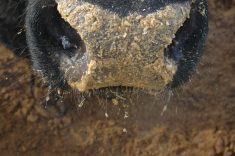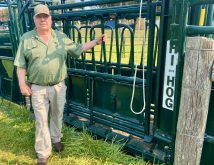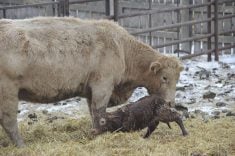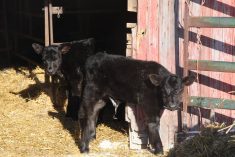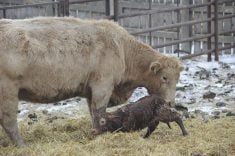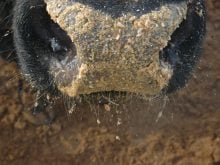Montana producer says Charolais has the most potential for crossing because many other European breeds have changed
Crossbred cattle have several advantages over purebreds, especially fertility, longevity, feed efficiency and disease resistance.
Buddy Westphal, a Charolais breeder near Polson, Montana, says he is amazed that more ranchers haven’t taken advantage of hybrid vigour.
“When I was in college 50 years ago, that was the ‘new’ thing that got me into the Charolais business. My genetics teacher, Dr. Sutherland, talked about hybrid vigour and said the Charolais imported from France in the mid-1960s would be the breed that would most complement British breeds. Dr. Sutherland was born in Scotland and educated in France, and knew a lot about European breeds,” says Westphal.
Read Also

Canada’s slaughter horse industry lacks transparency
The lack of clear reporting and public access to data keeps the industry largely hidden, leaving questions about humane treatment and traceability unanswered.
“Hybrid vigour provides an increase in growth and carcass yield over what the parents can produce. The more unrelated the parents, the more kick you get from hybrid vigour. The European cattle brought to North America during the 1960s were totally unrelated to the British breeds already here.”
Westphal is convinced the Charolais has the most potential for crossing because many other European breeds have changed. Limousin, Simmental, Chianina, Gelbvieh and others are now black. Breeders have infused Angus into these breeds to affect colour, so those animals are not as distant from British breeds as they once were, he says.
“They won’t give you as much kick with hybrid vigour if you use the black versions for crossing with British breeds.”
Composite cattle can provide desirable traits from two or more breeds but there isn’t as much hybrid vigour when animals within that composite group are bred. A complete outcross delivers maximum hybrid vigour.
“One of my classmates, Larry Rice, invented the Rice Pelvimeter, to measure cows’ pelvic area. One of the things we learned about crossbred cattle was that you could increase pelvic measurement by 30 square centimetres, from 235 to 265, with the crossbred heifers. It didn’t matter if you were using Hereford bulls on black cows or a Charolais bull, the daughters gained additional pelvic space,” Westphal says.
Crossbred females have greater fertility and longevity and tend to have more structural strength.
“Part of her longevity comes from the fact that the crossbred cow often has a more solid udder that doesn’t break down as readily. When using Charolais genetics in crossing, the crossbred animals have bigger feet and their feet stay sound longer,” Westphal says.
Crossbred calves also tend to be stronger and more vigorous, with stronger immune systems, he adds.
“The greater health and immunity makes a big difference in number of calves weaned. You also gain in growth, so it’s a double plus,” says Westphal.
“With crossbred cattle, performance in the feedlot is better than average. When feed is expensive, feed efficiency is (too). It’s common for some cattle to use 50 percent more feed. This is a huge factor in whether or not the cattle show a profit in the feedlot.
“We started seeing this efficiency in trials at the Miles City (Montana) and Clay Center (Nebraska) research stations years ago, but many cattlemen didn’t pay attention,” Westphal says.
“We’ve known for a long time that by having the parents as unrelated as possible, you gain more advantages in the calf. Most people are looking for more growth when crossbreeding, but also get higher percentage of weaned calves as well as higher weaning weights.”
Crossbred cows are more fertile, reach puberty at an early age and will breed back under harsher conditions, even while producing extra milk, he says.
Research has shown that a crossbred cow is about eight percent more efficient than a purebred, stays in the herd longer and has 25 percent more lifetime production in terms of pounds of calf weaned. This is partly because crossbreeding has the biggest impact on traits that are not highly heritable, such as fertility, age at puberty and longevity.
A cow that can calve at two years of age, never miss a year of calving, and stay in the herd another year or two beyond average culling age makes money. This is why animal scientists call this the “only free lunch” in the cattle business.
Data from heterosis studies at the U.S. Meat Animal Research Center in Nebraska showed that breakeven costs of production were reduced about 10 percent by using crossbred cows. A study at Montana State University compared effects of breed and heterosis on heifer pregnancy using purebred and crossbred females of several breeds. Results showed a higher percent of crossbred heifers calved at two years of age compared to purebreds.
With the popularity of black cattle and breeders’ desire for more uniformity and marbling, many commercial cow herds have lost the heterosis they once had.
According to Dr. Jim Gosey, a retired beef extension specialist at the University of Nebraska, the loss of heterosis in these herds shows up most quickly in fertility, hardiness and longevity.





